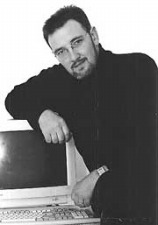Notes on the 40th Consumer Electronic Show
By Rick Castellini
The Consumer Electronics Show (CES) just completed its 40th mega- showcase in Las Vegas. I would love to know what the hot items were in 1967. At the 2007 show, a few themes stood out for me; HD TV is finally maturing, computers are officially a home appliance, and Microsoft brings us a 'new' operating system.
The year of HD
High definition (HD) television has been around for a few years now, but the TV's have been expensive and the programming almost non-existent.
In the past year, however, all the major networks broadcast sports, news, and most prime-time programming in HD format. With a special HD antenna, HD programming won't cost you any additional money per month, and you can enjoygreat picture and sound.
The HD televisions, on the other hand, can set you back as much as Americans paid for homes forty years ago at the start of the CES. The good news is that prices are dropping for HD flat panel TV sets. In fact, this year's CES showed prices dropped by 40 to 60 percent since last year.
Now yours for $1,000
The poster child of HD TVs is the 42" plasma. Last year, this TV would cost you about $2500, and in 2004, as much as $5000. This year, you can get a 42" plasma for around $1000. Two technologies not to overlook in the HD arena are DLP (you've seen the little girl and elephant commercials haven't you?) and LCD. DLP stands for Digital Light Processing and involves the use of tiny mirrors mounted to rotating orb that produces stunning color and more affordable flat panel technology. LCD or Liquid Crystal Display is the same technology that is used in flat panel computer screens and is a very mature product that offers a good mix of value and quality.
Computers - now home essentials
Microsoft released its operating system, Windows 95, in August of 1995. That release truly marked the start of computers becoming an appliance. In 1995, less than 15 percent of American households owned a computer. Today, nearly 80 percent of all households in the U.S. own at least one computer.
At this year's CES, Microsoft rolled out the red carpet for their very late and much criticized new version of Windows called Vista.
By the time you read this, Microsoft Vista computers will be on the shelves of your local computer store, and will be the only option for you other than Apple computers.
I have been testing Vista for more than four months and have been under whelmed. Even with Bill Gates' CES keynote speech and Vista emblems everywhere in Vegas, I am reserving judgment. My guess is that the computing public will not be very impressed. No doubt about it, though, CES 2007 showed that computers (especially hooked to a high-speed Internet service) are truly a valued home appliance and technology is in place and being developed to bring information and entertainment to all parts of our home via the computer.
This 'Vista' is not awe-inspiring
Microsoft is betting the farm that Windows Vista will 'change the way we work and live'. I'm not convinced of that and am one of many technology analysts/pundits that think that Microsoft missed the mark on this one. Personally, I think the door has been left wide open for companies like Apple or some new company building Linux-based systems to swoop in and take market share away from Microsoft.
Want more on the CES?
For more information about the future of technology, visit my web site at HelpMeRick.com to see video and audio reports from CES 2007.
Rick Castellini is an author, computer consultant, and hosts a nationally syndicated computer radio show from Colorado. Visit his web site at www.HelpMeRick.com for new tips every week and sign up for his free weekly email newsletter.
